Vortex breaker
A vortex breaker is installed to prevent the formation of a vortex when emptying a tank, for example. There are two types of vortex breakers.. disc type and cross type.
Disc type.. The disc type (pictured below) acts like a baffle plate, obstructing the axial flow without affecting the radial flow. It is usually three times the diameter of the outlet nozzle and mounted about 25 mm above the nozzle. This design eliminates the center vertical flow column above the disc and allows only horizontal flow in the area below the disc. As the liquid in the lower part of the tank moves horizontally toward the outlet nozzle, the liquid above it flows downward to replace it. The relatively small volume of liquid in the lower shell moving toward the exit nozzle still experiences the Coriolis force, but only for a short time as it is about to leave the tank.
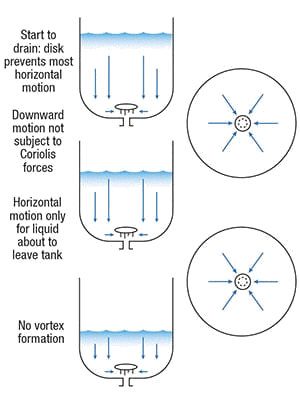
Cross type.. The second type of vortex breaker is the cross type (pictured here below). It is designed to prevent the formation of a vortex by creating a barrier to the rotational flow. In practice, however, small cross-type vortex interrupters placed immediately above the exit nozzle do not work. A little thought shows why.. the cross has no effect on vortex formation, since it impedes rotation only in the immediate vicinity of the outlet, but not in the main part of the tank, where the main rotational forces act.
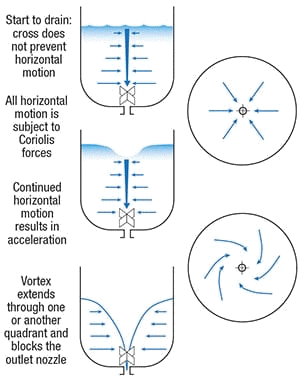
If you observe the emptying of a tank without a vortex breaker, you will see vortex formation. If the tank is equipped with a cross vortex breaker, you will also see vortex formation. If you look inside a fully developed vortex, you will see that the cross has no effect, the vortex moves freely from one quadrant to the other.
Considering that vortices are often formed when tanks are emptied, it is surprising that cross vortex breakers are still sometimes found in engineering designs. One reason for this could be the fear that the alternative disc vortex breaker is too much of a restriction and actually reduces the discharge from the tank. However, this is not the case as long as the flow area under the disc is greater than the area of the outlet nozzle.
In summary, the Coriolis effect causes fluid to rotate as it flows out of a tank. Without restriction, the fluid rotation creates a vortex that blocks the outlet and limits the discharge rate. In cases where a high discharge rate is important, such as for CIP or to match the discharge pump capacity, a vortex breaker is required to prevent liquid holdup and air entrainment. Cross vortex breakers are not effective, so a disc vortex breaker should be installed if a vortex breaker is required.
Reference(s) above.. www.chemengonline.com
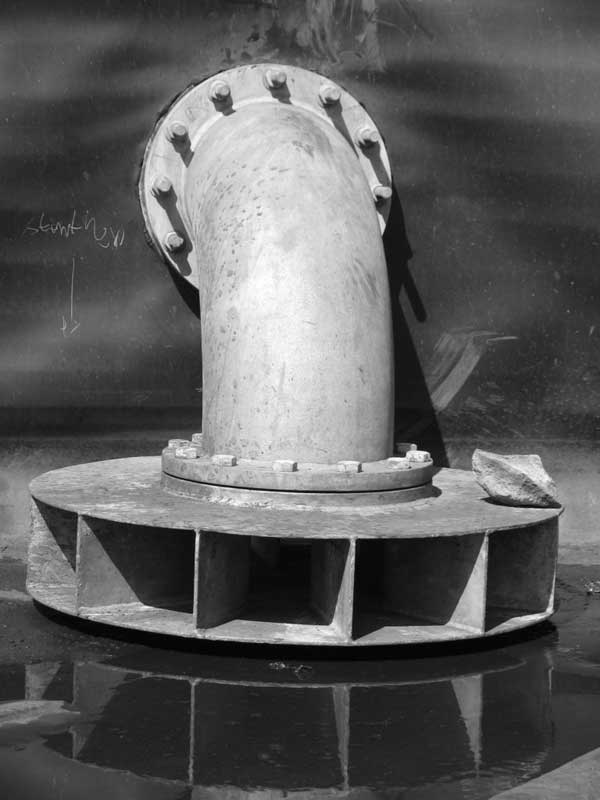
Applications of vortex breakers
Vortex breakers are commonly used in a variety of industrial and commercial applications where fluids flow through a piping system. Some of the most common applications of vortex breakers include..
Process Control Systems.. Vortex breakers are used in process control systems to prevent the formation of vortices in fluids such as chemicals, oil and gas, which can affect the accuracy of flow measurement and control.
Industrial Cooling Systems.. Vortex breakers are often used in industrial cooling systems to prevent the formation of vortices in the cooling water, which can reduce the efficiency of the system and cause damage to the pipes and other components.
Water treatment systems.. Vortex breakers are used in water treatment systems, e.g. for water withdrawal from rivers or lakes, where they prevent the formation of vortices that can lead to the entrainment of dirt particles or aquatic life.
Oil and gas production.. Vortex breakers are used in oil and gas production to prevent the formation of vortices in the production fluids, which can lead to problems such as reduced production rates, increased equipment wear and increased safety risks.
Fire Protection Systems.. Vortex breakers are used in fire protection systems to prevent the formation of vortices in the water supply that can impair the flow of water to the fire hose and reduce the effectiveness of the system.
HVAC systems.. Vortex breakers are used in HVAC systems to prevent the formation of vortices in the airflow that can reduce system efficiency and cause damage to ductwork and other components.
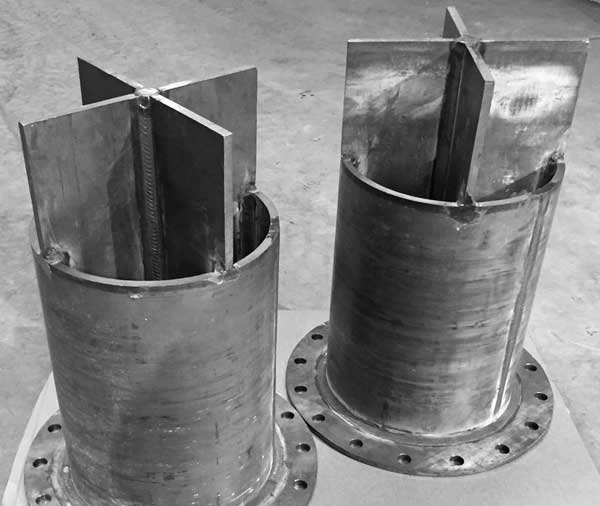
Effect of vortices on the flow
The main reasons for avoiding vortex formation are..
- They form an obstacle in the smooth flow
- Vortex flow draws gases into it and creates a two-phase flow, which has several disadvantages
- Vortices disrupt the flow pattern in the pipe or nozzle and can lead to erosion of pipes and fittings
- The occurrence of a vortex in a fluid system causes a drop in pressure. This increases the demand for pumping force
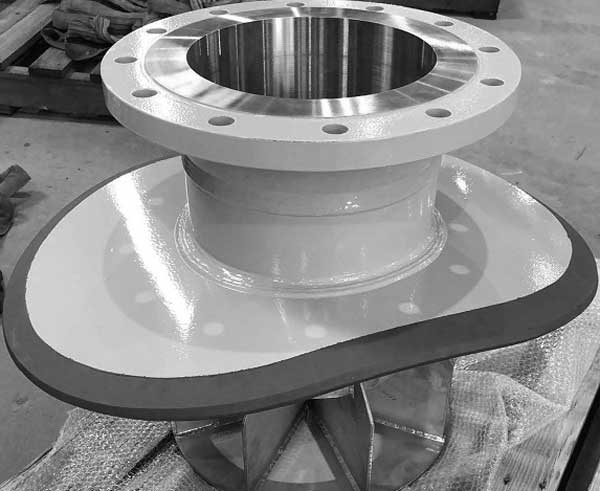 Image.. www.wilsonspipefab.com.au
Image.. www.wilsonspipefab.com.au